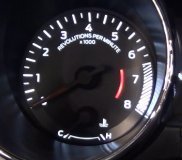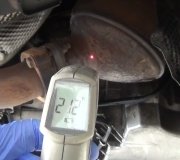I'm not an expert on "mechanic-in-can" or other additives, but I can share a great and wondrous story on oil leaks. All engine oil has to meet the latest ratings that might be required with a certain engine. That is shown by the "S" and "C" ratings on the container. "S" stands for "spark ignition", meaning a gas engine, and "C" is for "compression ignition", meaning diesel engines. Each time there's a new set of standards, the second letter will increase by one, so "SG"-rated oil is an improvement over the no-longer-produced "SF"-rated oil.
Beyond those ratings, every motor oil producer has their own proprietary formula for the additives they use. Those include detergents to remove deposits, dispersants to hold the bad stuff in suspension so it can be carried to the filter, anti-foaming agents to prevent air bubbles from being whipped into the oil when it gets hit by the spinning crankshaft, viscosity index improvers to maintain the oil's thickness so it will continue to isolate moving parts from each other, (think the.006" clearance between an engine bearing and the journal it rides on), seal conditioners, to keep them soft and pliable, and corrosion inhibitors, to, ... Uhm, ... Prevent corrosion.
Where the problem comes in quite often is when you switch to a different brand of oil during an oil change. The typical V-8 engine holds around seven quarts of oil, but only five of that drains out when you do the oil change. The other two quarts is stuck in the oil pump, passages, lifers, and places in the heads where it pools. Most of the additives wear out in about 3,000 miles, but what remains might not be compatible with the additives in the new oil. If the new detergent attacks the seal conditioners in what's left of the old oil, it could expose a leak, or make some minor seepage turn into a noticeable leak.
Another source of trouble appears to show up when switching to synthetic oil. I've heard about this from a number of people, and witnessed it with two students, but I've never read about this anywhere yet. Engines have developed fairly bad oil leaks within a couple of weeks of switching to synthetic oil. My students switched back after a couple of months, then it took a second oil change after another couple of months, then the leaks slowed down a lot. The leaks never totally dried up, but they were small enough to ignore.
As for your oil pan, by '88, GM had been using gasket sealer from a tube on their rear axle differential covers for quite a while. That eventually became standard on many other applications, including oil pans. You can still buy cork or fiber gaskets, but you still need to clean the surfaces, so you might as well just use the sealants. If you can unbolt and drop the pan enough to fish the fiber gasket into the pan, then under and around the oil pump's pick-up tube and screen, you can add it that way. It is going to have to cut into and seal through the sealant residue. This is an even bigger problem on rear-wheel-drive Fords. The oil pans rust out and leak, so they have to be removed, and that requires lifting the engine, often to the point of damaging the wiper motor, if you aren't paying attention.
The best way to do this is obviously to lift the engine, if necessary, then scrub the surfaces clean, then use the sealant. I'm very familiar with Chrysler's products. Other manufacturers have the same stuff under their own name. Chrysler's black sealant cures more rubbery, but it absolutely will not bond and seal anywhere there is a hint of oil residue on either surface. This can be a problem on the four-speed automatic transmission pans. Transmission fluid will still be draining and running across part of the gasket surface a day later if you care to wait that long. There's some easy ways to overcome that, but instead, they have a gray sealant that WILL seal through a little film of oil. That stuff cures a little harder, and in some applications that makes it harder to scrape off next time. I like the gray stuff the best because when you make a piggy-mess of yourself, it is stickier and not as slimy compared to the black stuff. Once it cures on your fingers, it's easier to rub off.
You don't have to wait the hour or so for either one to cure. You can add the oil or transmission fluid right away.
I'm not opposed to you using an additive to try to stop the oil leak, but I'd start by looking at the oil you're using. Some oils advertised for "high-mileage" engines claim to have extra additives to address leaks, which are more common in older engines. A lot of these types of additives can be left out of cheaper brands of oil without negatively affecting the oil's ability to do the important parts of its job, just like leaving power windows off a car doesn't affect its ability to get you back home.
Mechanics don't use additives for things like this, so it doesn't pay to ask their opinions. Instead, if you're going to go with a can of something, ask the people at an auto parts store what they recommend and have had good luck with. They receive training and related information from their suppliers, and they know when to warn you against using a certain product.
Friday, April 21st, 2017 AT 10:54 PM


